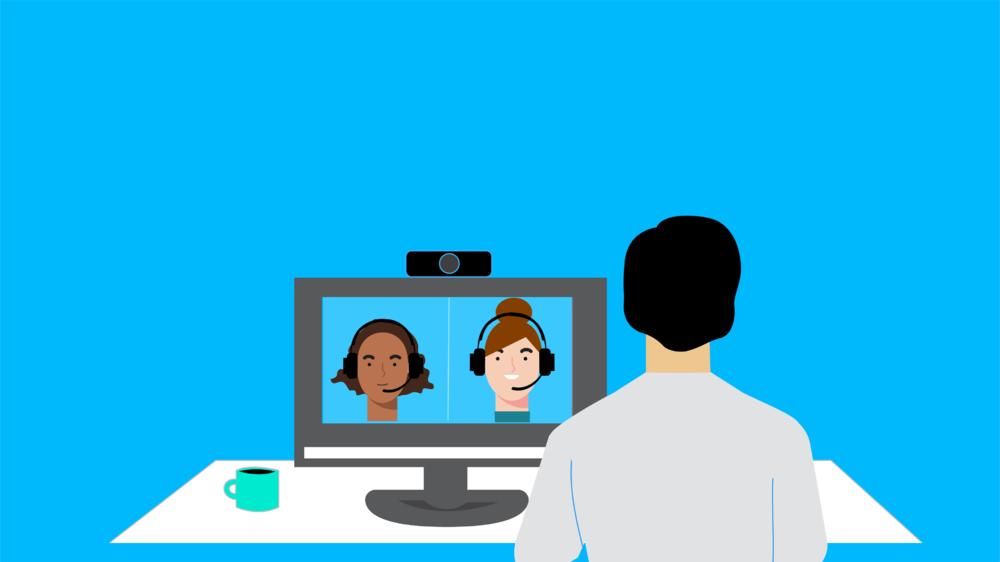Article: Creating Social Connection at Work with Video Conferencing| Logitech VC

Much has been written about the cost of unproductive meetings. Doodle, for example, estimates that unproductive business meetings cost companies $541 billion in lost productivity and employee time every year. While compelling, statistics like these do not tell the whole story. Some of the “unproductive” time spent in meetings is actually quite important.
Meetings are inherently social – and this aspect of meetings is often undervalued. Social connection is a vital part of worklife for all employees. Healthy social connections also deliver benefits for the business or larger organization, in part by fostering employee engagement and loyalty.
Unfortunately, the social aspect of office work has been severely tested by the coronavirus pandemic and resulting lockdown in many businesses. But there is good news.
By taking advantage of the capabilities of video conferencing, meeting organizers can revitalize social connection during this time of social distancing. There is further evidence that video conferencing not only improves overall meeting effectiveness but could have positive downstream effects such as improving productivity and employee engagement.
Why Social Connection is so Important in the Workplace
The desire to feel a sense of belonging is innate to humans, and a sense of belonging at work can boost our happiness and our willingness to contribute to the organization’s success. According to an article on Forbes.com, “Employers who support social connections in the workplace and help employees form strong relationships with one another help build a successful workforce.”
For both employees and the businesses they work for, healthy social connection at work provides a number of benefits:
Greater creativity and problem solving
Higher productivity
Increased loyalty
Higher employee retention rates
How Video Conferencing Restores Social Connection
Lack of social connection is a problem during a period of social distancing and self-isolation, when impromptu gatherings and hallway conversations are not taking place. Fortunately for employees and organizations, academic research indicates that video conferencing can be an effective replacement for those informal conversations and restore the sense of belonging and connection that people miss during social distancing.
According to Dr. Joseph A. Allen, Professor of Industrial and Organizational Psychology, face-to-face and video conferencing are essentially the same in terms of overall effectiveness and satisfaction, while teleconferencing is significantly less effective. Here’s why: Video conferencing offers a great deal of “informational value” through nonverbal cues as well as verbal dialog. These nonverbal cues – a sympathetic look, a simple hand gesture – are vital to creating social connection.1
In fact, it’s possible that during this period of self-quarantine, video conferencing may actually increase social connection in ways that weren’t widely considered before the pandemic.
For example, office workers now routinely meet on video from the privacy of their own kitchens, living rooms, and backyards. It’s not unusual during these meetings for a parent to be interrupted by their children, who are always at home due to the quarantine. Pets also make cameo appearances. We get to see the artwork our colleagues choose to display, or the books and knick knacks on their shelves. All of these details from our co-workers’ homes and personal lives give us a glimpse into who they are. This context can create familiarity, empathy, and deeper connection between colleagues.
Key Takeaways for Meeting Organizers and IT Managers
Understanding the importance of social connection, how it’s formed, and how video conferencing can restore it for remote workers provides us with insights and recommendations for meeting organizers and IT managers.
1. Make time for “pre-meeting talk.” By relaxing formalities at the beginning of a meeting while encouraging people to arrive promptly, meeting organizers can purposefully make time for small talk that creates social connection.2
2. Set aside time for unscheduled or unstructured meetings. Impromptu meetings, like hallway conversations, are sometimes where the most important work is done.3
3. Make meetings shorter. Keeping meetings short and crisp allows you to gain the benefits of social connection while reducing meeting fatigue, an all-too-common symptom of this quarantine period.4
4. Expect disruptions. Set ground rules and norms that disruptions are okay. Interruptions by children and pets are probably unavoidable now and show that we’re all human after all.
5. Celebrate individuality. The window we have into our colleagues’ lives can help us get to know each other a little better.4
6. Take advantage of video conferencing tools. Purpose-built headsets and webcams strengthen the benefits of video conferencing by making it easier to see and hear everyone clearly. Being seen and heard is a necessary requirement for healthy social connection.
After the Quarantine
As Dr. Allen from the University of Utah notes, “We don’t have to be in social isolation to social distance.” Video conferencing offers an opportunity to strengthen the social connections that are so important in the workplace and that many of us are missing right now.
Moreover, we can take the lessons we’ve learned during this pandemic once "stay at home" orders are lifted and some employees begin returning to the office. We can make video conferencing a staple of future meetings, and use it to build a greater understanding and empathy for each other.
_________________
1 For more information, see: https://meetingscience.io/the-coronavirus-and-remote-work-best-practices-for-remote-meetings/, March 12, 2020.
2 For more information, see: Allen, J. A., Landowski, N., Lehmann-Willenbrock, N. (2014), “Linking Pre-meeting Communication to Meeting Effectiveness.” Journal of Managerial Psychology, 29(8), 1064-1081.
3 For more information, see: Allen, J. A. & Rogelberg, S. G. (2013), “Manager-led Group Meetings: A context for promoting employee engagement.” Group and Organization Management, 38, 543-569.
4 For more information, see: Gerpott, F., & Lehmann-Willenbrock, N. (2015), “How differences make a difference: The role of team diversity in meeting processes and outcomes.” In J. A. Allen, N. Lehmann-Willenbrock, and S. G. Rogelberg (Eds.) The Cambridge Handbook of Meeting Science. (pp. 153-176). New York, NY: Cambridge University Press.
You May Also Be Interested In
RECOMMENDED PRODUCTS
VIDEO CONFERENCING FOR EVERY SPACE.
Find out more about how Logitech video conferencing products
perform in a business environment.





